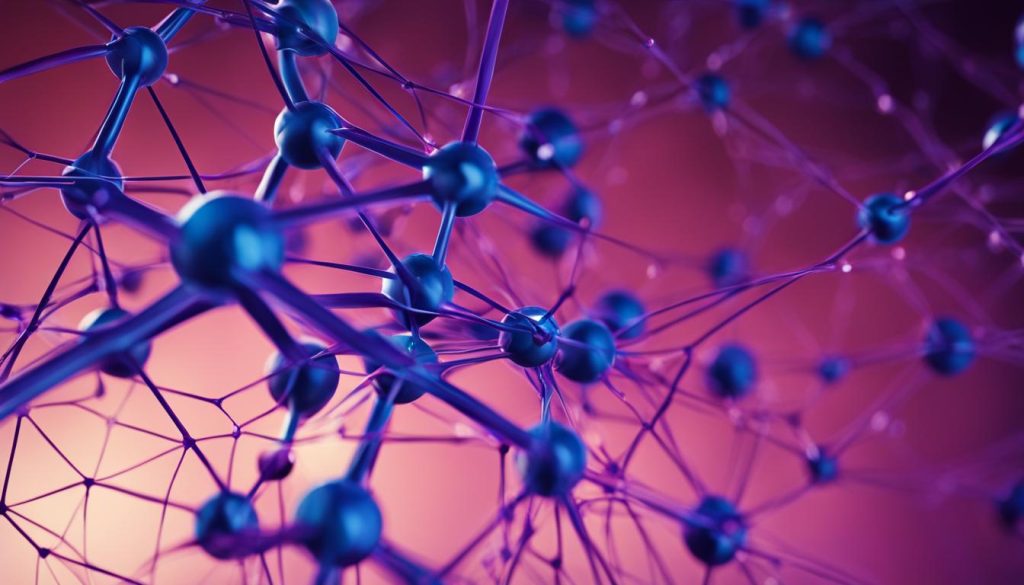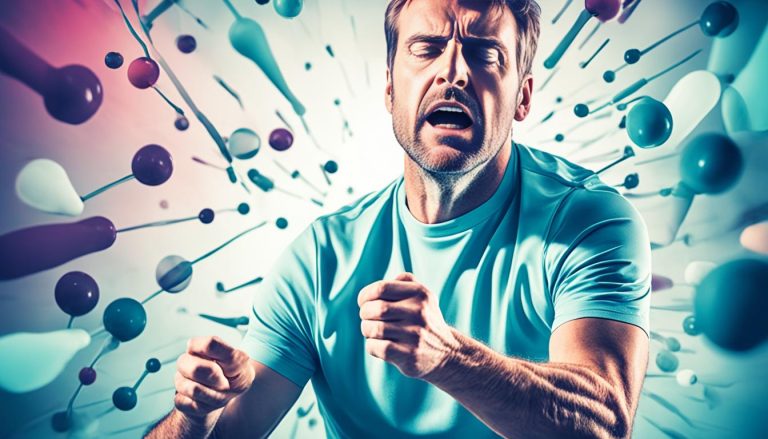What Is Ibogaine And How Does It Work?
The journey towards addiction recovery is complex and challenging, often requiring a multifaceted approach. Among the array of options, ibogaine therapy stands out as an innovative and alternative modality. But what exactly is this treatment, and what makes it unique? Originating from a West African shrub, ibogaine is a naturally occurring psychoactive alkaloid that’s been gaining traction within addiction treatment circles. Employed in various therapeutic settings, ibogaine treatment is recognized for its potential to diminish withdrawal symptoms and cravings, laying the groundwork for deeper psychological healing.
With a growing body of research focusing on the ibogaine mechanism of action, it’s becoming clear that this therapy could be transformative for individuals battling addiction. The efficacy of ibogaine goes beyond mere detoxification; it initiates a process of holistic healing by rewiring the very neurochemical patterns that underpin addiction. As a result, ibogaine detox programs are increasingly sought after by those who are battling substance dependencies and looking for long-term solutions.
However, like any treatment, it is essential to understand how it works, its benefits, and the potential risks involved. Comprehensive insight into ibogaine’s impact on the brain and how it can contribute to addiction treatment is fundamental for those considering this route. Let’s delve into understanding the science behind ibogaine and why it has emerged as a beacon of hope for many grappling with addictions.
Key Takeaways
- Ibogaine therapy offers a unique treatment approach, working on both psychological and neurochemical levels.
- Understanding the ibogaine mechanism of action is key to recognizing its potential in addiction treatment.
- Ibogaine treatment is associated with reduced withdrawal symptoms and long-term suppression of substance cravings.
- The complex pharmacology of ibogaine necessitates professional clinical supervision.
- While promising, ibogaine therapy requires careful consideration of potential cardiovascular and neurotoxic risks.
- The future of ibogaine detox and treatment relies on continued research and an increased understanding of its benefits and limitations.
Understanding Ibogaine: Origins and Properties
Delving into the depths of traditional healing methods reveals the rich history and diverse properties of ibogaine. An alkaloid with roots in West African spiritual practices, ibogaine has journeyed from the heart of rituals to the forefront of modern science, where ibogaine research continues to unravel its complexities.
The History of Ibogaine Use
Ibogaine’s origins are woven into the spiritual tapestry of the Bwiti religion, where the Tabernanthe iboga shrub is not merely a plant but a vessel of wisdom and connection. The significance of ibogaine within these cultural practices underscores its established role in promoting healing and introspection, aspects that guide contemporary exploration into its therapeutic potential.
Psychoactive Components of the Iboga Shrub
Among the myriad of alkaloids present in the iboga shrub, ibogaine stands out for its distinctive influence on the brain’s pathways. As a compound that can inspire a dissociative psychedelic experience, it ignites a blend of dreamlike imagination and a sense of detachment from the self, fostering a unique realm for personal insight and rejuvenation.
Medical and Therapeutic Applications
The therapeutic applications of ibogaine are vast and varied, with early achievements showing promise in the realm of addiction treatment. Spanning from dependencies on substances such as opiates and alcohol to psychostimulants and nicotine, ibogaine benefits are as diverse as they are significant. Beyond addiction, its potential radar includes the alleviation of neuropathic pain and offering new pathways for neurodegenerative disorders, inviting further inquiry and hopeful advances within ibogaine clinics worldwide. However, the intricate dance it performs with neural transmitters calls for rigorous and conscientious research, striking a balance between potential gains and patient safety.
What is ibogaine and how does it work
An increasing body of research demystifies how does ibogaine work to address the scourge of addiction. Ibogaine’s effects resonate beyond the immediate, leaving an enduring impact on those seeking freedom from addictive patterns. The substance’s hallucinogenic journey is akin to a dreamlike voyage, facilitating deep introspective insights that are essential in breaking the chains of dependence.
Psychedelic and Dissociative Effects
The ibogaine experience often manifests as a profound, oneiric episode, weaving the fabric of the mind’s subconscious patterns into conscious awareness. This experience ignites a metamorphosis in perception, setting the stage for its therapeutic potential. The dreamlike state induced by ibogaine blurs the line between reality and the psyche’s inner workings, a feature instrumental in addiction therapy.

Ibogaine’s Interaction with Neurotransmitters
The ibogaine mechanism of action is unique in its comprehensive approach to neurotransmitter engagement. It deftly modulates an array of receptor sites—NMDA, nicotinic, and various opioid receptors—each playing a significant role in the psyche and body’s response to addictive substances. Ibogaine particularly shines in its serotonergic activity, exhibiting a strong affinity for serotonin 5HT2A receptors, which underpin its visionary effects. Additionally, ibogaine effects have been observed in the dopamine pathways, where it dampens the grips of addiction by adjusting dopamine levels and gene expression, consequently reshaping one’s relationship with compulsive behaviors and cravings. Through these multifaceted interactions, ibogaine carves a path to rehabilitation, redefining mental and physical dependencies with transformative potential.
The Chemical Mechanism of Ibogaine in the Brain
As a beacon of hope for many facing the challenges of addiction, ibogaine treatment offers a unique and complex approach to overcoming dependency. Delving into its inner workings, we discover that ibogaine therapy operates within the intricate network of brain chemistry, casting a wide net over various neurotransmitter systems. Its versatility as both an agonist and antagonist to these receptors places ibogaine at the forefront of addiction research, illustrating its profound ibogaine mechanism of action. The substance not only promises to aid in ibogaine detox processes but also opens doors to potentially treat an array of neurological conditions.
Affinity for Multiple Neurotransmitter Receptors
Ibogaine’s notable affinity is not limited to one but multiple neurotransmitter receptors within the brain. This broad-spectrum engagement is what equips ibogaine with the potential to significantly influence addiction pathways, leading to reductions in withdrawal symptoms and cravings subjection to substance abuse. It’s a key player in the central nervous system, intertwining with receptors such as NMDA, nicotinic, sigma, and various opioid receptors, which are crucial in the addictive process.
Impacts on Neuroreceptors and Addictive Pathways
The prowess of ibogaine in mitigating the impact of addictive substances revolves around its role as a reducing agent. By dampening excitotoxic damage, ibogaine aids in restoring balance and normalcy to neurological pathways disrupted by addiction. The anti-addictive process that unfolds under the influence of ibogaine is not just a temporary Band-Aid but a step towards long-term recovery and neurological rehabilitation.
Potential for Neuropathic Pain and Neurodegenerative Disorders Treatment
Looking beyond its current applications, the therapeutic potential of ibogaine extends into areas like neuropathic pain management and the treatment of neurodegenerative disorders. Conditions such as Parkinson’s and Alzheimer’s disease might one day benefit from the neuroprotective properties ibogaine exhibits. However, despite its potential and relatively low potency, caution around dosage and administration is paramount due to the risk of neurotoxicity at higher dosages, underscoring the need for continuous clinical supervision.
Ibogaine Treatment for Addiction: Efficacy and Methodology
The journey to freedom from addiction is arduous, but the emergence of ibogaine treatment as a form of addiction treatment has sparked hope for many. Ibogaine, a naturally occurring psychoactive substance found in the West African Tabernanthe iboga plant, has demonstrated substantial ibogaine benefits for those struggling with substance dependence. Its ability to disrupt addiction patterns and curb cravings has made it an intriguing option in the realm of therapeutic interventions.
Anti-Addictive Potentials of Ibogaine
One of the most compelling aspects of ibogaine is its potential to initiate a deep transformation in individuals grappling with addiction. By addressing the psychological underpinnings of dependency, ibogaine fosters an introspective process that can lead to lasting change. Reported outcomes from various ibogaine clinics across the globe suggest that patients experience a significant reduction in withdrawal symptoms and cravings, paving the way toward sustained sobriety.
Therapeutic Dosage and Administration Strategies
Ensuring the safety and effectiveness of ibogaine therapy requires a personalized approach. Dosages are carefully determined based on individual needs, with therapeutic levels generally ranging between 5 mg/kg to 30 mg/kg of body weight. Due to potential side effects, such as ataxia and nausea, ibogaine administration is conducted under medical supervision, often exploring innovative methods to enhance patient comfort and treatment outcomes.
Case Studies and Long-term Efficacy Analysis
Anecdotal evidence and clinical case studies have underscored the long-term efficacy of ibogaine in addiction recovery. While some individuals may find resolution after a single session, others benefit from ongoing maintenance treatments combined with psychological support. These promising findings highlight ibogaine’s role not only as a short-term solution but as a catalyst for enduring recovery, transforming a once hopeless battle into a hopeful future.
Ibogaine’s Anti-Addiction Mechanisms Explored
In the ongoing pursuit of combating addiction, ibogaine detox has emerged as a compelling avenue. This natural extract is not only harnessing attention for its potential to mitigate withdrawal symptoms but also for its profound ibogaine effects on craving reduction and healing on a molecular level. As ibogaine research continues to delve into its therapeutic potential, the complexities of its restoration of normal brain function are becoming increasingly understood.
Reducing Substance Abuse Cravings
Challenging the cycle of addiction requires a multifaceted approach. Ibogaine appears to support individuals on this journey by addressing the urgent cravings that often lead to relapse. The alkaloid’s ability to modulate the brain’s reward pathways is a beacon of hope for those seeking a new chapter beyond the grip of dependency. Its cravings reduction effect is an indispensable tool, manifesting the possibility of life where addiction does not hold power.
Restorative Effects on Gene Expression
The influence of ibogaine extends beyond the psychological sphere, reaching down to the genetic core of a person’s being. There, it works to undo the alterations in gene expression wrought by opiate abuse. By resetting these vital biological scripts, ibogaine ushers in the possibility for lasting recovery, remodeling the brain’s response to addictive substances. Such restorative actions are leading scientists and medical professionals to rethink addiction treatment paradigms, underscoring the vital role of gene expression in the roadmap to recovery.
Moreover, the potential to develop analogs of ibogaine that could offer similar benefits with fewer side effects stimulates excitement within the pharmaceutical landscape. The promise lies not only in recovering lives but also in elevating the safety and efficacy of addiction treatments across the board. By probing into the very fabric of addiction, ibogaine has the potential to reweave it into a tapestry of sobriety and well-being.
Safety and Legal Status of Ibogaine
Exploring the world of alternative addiction treatments inevitably leads to discussions about ibogaine safety and the legal framework surrounding its use. Although ibogaine has shown promise in the realm of substance dependency, the complexities of its effects mandate a comprehensive understanding of the risks involved. Ensuring patient well-being is paramount when considering treatments that venture outside of traditional medical protocols.
Risks and Potential Side Effects
Delving into the topic of ibogaine treatment risks, it’s essential to acknowledge both the therapeutic potential and the associated dangers. Major side effects can range from seizures and gastrointestinal disturbances to more severe cardiovascular complications, such as arrhythmias. Unfortunately, fatalities have been noted, often linked to improper dosing or pre-existing health conditions, highlighting the critical need for controlled, medically supervised environments during ibogaine administration. This safety profile indicates the substance’s powerful pharmacological impact, which warrants respect and caution.
Global Regulations and Ibogaine’s Legal Classification
The ibogaine legal status is as complex and varied as its pharmacology. While in the United States, it sits amongst the Schedule I drugs, forbidden due to high abuse potential and lack of FDA-approved medical use, other countries offer a contrasting viewpoint. In places like Canada and Mexico, regulations adapt to recognize ibogaine’s therapeutic potential, with clinics operating under legal auspices to provide carefully controlled treatments. Such international divergence exemplifies the ongoing debate surrounding ibogaine’s place in medicine and society, with safety considerations and legal viability at the crux of this multifaceted issue.
The Future of Ibogaine Research and Potential Uses
As medicinal chemistry continues to unveil the complexities of ibogaine, researchers are increasingly captivated by the prospects of this multifaceted molecule. A substantial part of this enthusiasm revolves around the synthesis of ibogaine-like compounds that echo the therapeutic effects of ibogaine but with reduced toxicity. This new wave of research aims not only to amplify ibogaine’s efficacy but also to forge pathways for safer clinical applications. The dedication to expanding ibogaine’s therapeutic range underscores a future where this substance could improve the lives of individuals beyond the sphere of addiction.
Developments in Synthetic Ibogaine-like Compounds
The drive to enhance safety profiles while maintaining the anti-addictive prowess of ibogaine has led to the conceptualization of synthetic ibogaine compounds. Medicinal chemists are zeroing in on crafting simpler versions of this robust alkaloid, aiming to distill its essence into less complex structures that provide more predictable pharmacological benefits. Work in this area could revolutionize the landscape of ibogaine research, offering more accessible and targeted treatments for those grappling with addiction.
Expanding Ibogaine’s Therapeutic Horizons
Looking toward the horizon, the therapeutic uses of ibogaine appear primed for expansion. The impact ibogaine has on neurotransmitter systems places it as a promising candidate for an array of neuropsychiatric conditions. Researchers are exploring the potential for ibogaine treatments to address chronic pain syndromes, such as neuropathy, and neurodegenerative diseases, such as Parkinson’s. This broadening of scope is a vital reminder of the imperative to continue exploring the full spectrum of expanding ibogaine uses, shaping a future where the full potential of ibogaine can be realized and harnessed for the greater benefit of global health.
FAQ
What Is Ibogaine And How Does It Work?
Ibogaine is a psychoactive compound derived from the root bark of the Tabernanthe iboga shrub. It works by affecting various neurotransmitters in the brain, interacting with NMDA, opioid, serotonin, and other receptors to exhibit both psychedelic effects and a potential reduction in cravings and withdrawal symptoms associated with addiction treatment.
What is the History of Ibogaine Use?
The origins of ibogaine use date back to the Bwiti religion in West Africa, where it has been utilized for medicinal and ceremonial purposes. It was introduced to Western medicine in the 20th century and has been researched for its potential therapeutic applications, particularly in addiction treatment.
What are the Psychoactive Components of the Iboga Shrub?
The iboga shrub contains multiple alkaloids, with ibogaine being the most notable for its psychoactive properties. These components impact the brain’s neurotransmitter systems and can induce a dreamlike state, which contributes to its therapeutic potential.
What are the Medical and Therapeutic Applications of Ibogaine?
Ibogaine therapy is primarily researched and used for addiction treatment, including opioids, stimulants, alcohol, and nicotine. There are also exploratory applications for treating neuropathic pain and neurodegenerative disorders like Parkinson’s and Alzheimer’s disease.
What are Ibogaine’s Psychedelic and Dissociative Effects?
Ibogaine induces a oneiric, or dreamlike state, which can offer therapeutic psychological insights. These psychedelic and dissociative effects are part of what helps to disrupt addictive patterns and facilitate introspection during addiction therapy.
How Does Ibogaine Interact with Neurotransmitters?
Ibogaine interacts with neurotransmitters by binding to and modulating receptors like NMDA, nicotinic, and opioid receptors. This complex interaction helps to alleviate drug cravings and withdrawal symptoms, potentially aiding in addiction recovery.
What is Ibogaine’s Affinity for Multiple Neurotransmitter Receptors?
Ibogaine has an affinity for a variety of neurotransmitter receptors, which allows it to have a broad-spectrum impact on neurochemical activity and potentially facilitate addiction detox and treatment.
How Does Ibogaine Impact Neuroreceptors and Addictive Pathways?
Ibogaine modulates the activity of neuroreceptors in ways that can reverse the effects of addictive substances on the brain’s chemistry, helping to reduce cravings and restore more normal neural function.
Could Ibogaine be Used for Neuropathic Pain and Neurodegenerative Disorders Treatment?
While primarily researched for addiction treatment, the neurochemical impact of ibogaine suggests potential use for neuropathic pain and neurodegenerative conditions. However, more research is needed to establish efficacy and safety in these areas.
What are the Anti-Addictive Potentials of Ibogaine?
Ibogaine’s anti-addictive potential lies in its ability to reduce cravings and withdrawal symptoms, alter addictive behavior patterns, and possibly contribute to long-lasting changes in brain chemistry associated with substance abuse.
What are the Therapeutic Dosage and Administration Strategies for Ibogaine?
Effective therapeutic doses of ibogaine vary, but they typically range from 5 mg/kg for mild addiction treatment to 30 mg/kg for more severe cases. Administration should be carefully monitored due to the risk of side effects, with strategies such as enemas being explored to minimize adverse reactions like nausea and vomiting.
Can you share Case Studies and Long-term Efficacy Analysis of Ibogaine Treatment?
Case studies have documented instances where a single ibogaine treatment has resulted in a decrease or cessation of substance use for several years. However, comprehensive and systematic long-term efficacy analysis is still ongoing, with the need for additional research and clinical trials to validate these findings.
What are the Risks and Potential Side Effects of Ibogaine?
Potential side effects of ibogaine include ataxia, nausea, seizures, gastrointestinal disturbances, and cardiovascular complications like arrhythmias. These risks highlight the importance of clinical supervision during ibogaine therapy.
What is the Global Regulations and Ibogaine’s Legal Classification?
The legal status of ibogaine varies by country. It is classified as a Schedule I substance in the United States, indicating a high potential for abuse and no accepted medical use. However, ibogaine therapy is legally provided in countries like Canada and Mexico within specialized clinics.
What are the Developments in Synthetic Ibogaine-like Compounds?
Researchers are working on developing synthetic compounds that mimic the anti-addictive effects of ibogaine but with fewer side effects and toxicity. These compounds aim to improve upon ibogaine’s therapeutic potential.
How is Ibogaine’s Therapeutic Horizons being Expanded?
Beyond addiction treatment, the potential therapeutic applications of ibogaine are being explored for neuropathic pain, neurodegenerative diseases, and possibly other conditions. Ongoing research aims to optimize ibogaine’s efficacy and safety profile for broader clinical use.







